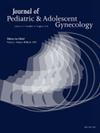Young People's Perceptions of Why Sexually Active Peers May Not Use Prescribed Contraception
IF 1.8
4区 医学
Q3 OBSTETRICS & GYNECOLOGY
引用次数: 0
Abstract
Study Objective
Access to contraception is a necessary component of reproductive autonomy for adolescents and young adults (AYAs). AYAs persistently face barriers to accessing confidential, affordable contraception. In this study, we characterize and describe the most common reasons AYAs perceive that their sexually active peers might not use prescribed contraception.
Methods
Using a cross-sectional national text-based survey of AYAs aged 14-24, we conducted a content analysis of open-ended text responses to a question about why AYAs’ sexually active peers might not use prescribed contraception (n = 554). We identified the most common reasons for non-use and examined differences in reported reasons for non-use by demographic factors.
Results
AYAs reported that their sexually active peers may not use prescribed contraception because they have concerns about it being harmful, they may be stigmatized for using contraception, and it can be logistically difficult for AYAs to obtain. Older and pregnancy-capable respondents were more likely to perceive contraceptive harm as a reason for prescribed contraception non-use (P < .05) but were less likely to perceive stigma and logistical barriers as a reason for non-use (P < .05) compared to younger and pregnancy-incapable respondents.
Conclusion
We found that perceptions of contraceptive non-use by peers vary by respondents’ age and pregnancy capability, likely due to differences in exposure to contraception information in peer groups and their own contraceptive use experiences. Understanding AYAs’ perceived reservations towards prescribed contraception is vital to inform clinicians’ counseling conversations and for public health messaging.
年轻人对为什么性活跃的同龄人可能不使用规定的避孕措施的看法。
研究目的:获得避孕措施是青少年和青壮年生殖自主的必要组成部分。在获得保密、负担得起的避孕药具方面,美国青少年协会一直面临障碍。在这项研究中,我们描述了asa认为性活跃的同龄人可能不使用规定避孕措施的最常见原因。方法:对14-24岁的青少年进行横断面全国文本调查,我们对青少年性活跃的同龄人为何不使用规定的避孕措施这一问题的开放式文本回答进行了内容分析(n=554)。我们确定了不使用的最常见原因,并检查了人口因素报告的不使用原因的差异。结果:AYAs报告说,他们的性活跃的同伴可能不使用规定的避孕措施,因为这被认为是有害的,他们可能会因使用避孕措施而受到歧视,并且AYAs可能很难获得。年龄较大和有妊娠能力的受访者更有可能将避孕危害视为不使用规定避孕措施的原因。结论:我们发现同龄人对不使用避孕措施的看法因受访者的年龄和妊娠能力而异,这可能是由于同龄人群体中避孕信息的接触程度和他们自己的避孕措施使用经历的差异。了解AYAs对处方避孕的保留意见对于告知临床医生咨询谈话和公共卫生信息至关重要。
本文章由计算机程序翻译,如有差异,请以英文原文为准。
求助全文
约1分钟内获得全文
求助全文
来源期刊
CiteScore
3.90
自引率
11.10%
发文量
251
审稿时长
57 days
期刊介绍:
Journal of Pediatric and Adolescent Gynecology includes all aspects of clinical and basic science research in pediatric and adolescent gynecology. The Journal draws on expertise from a variety of disciplines including pediatrics, obstetrics and gynecology, reproduction and gynecology, reproductive and pediatric endocrinology, genetics, and molecular biology.
The Journal of Pediatric and Adolescent Gynecology features original studies, review articles, book and literature reviews, letters to the editor, and communications in brief. It is an essential resource for the libraries of OB/GYN specialists, as well as pediatricians and primary care physicians.

 求助内容:
求助内容: 应助结果提醒方式:
应助结果提醒方式:


